Español
El Triángulo del Arte en Madrid, integrado por el Museo del Prado, el Reina Sofía y el Museo Thyssen-Bornemisza.
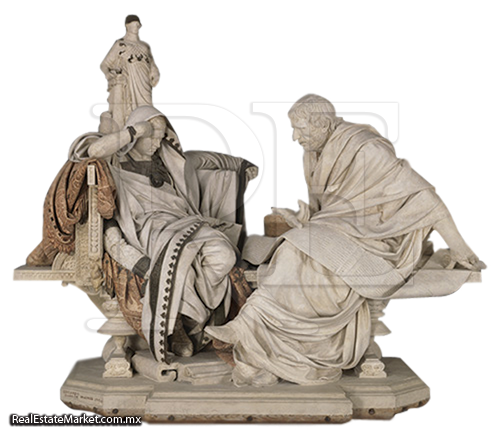
Nerón y Séneca, 1904 / (después de la restauración). / Eduardo Barrón. Vaciado aq molde, escayola, 135 x 260 x 148 cm.
El eje Prado-Recoletos en la zona céntrica de Madrid alberga el llamado “Triángulo del Arte”. En su conjunto conforma un paseo por la que pudiéramos considerar la mejor pinacoteca del mundo. Óleos, paletas de colores y artistas sin los cuales sería imposible entender la historia de la pintura.
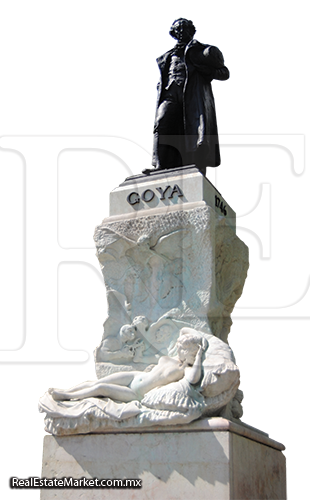
Monumento a Goya, 1902, realizada en bronce y mármol por el escultor español Mariano Benlliure.
Velázquez, Goya, Picasso, Tiziano, Rubens, El Bosco, Gauguin, El Greco, Van Gogh, Durero, Dalí, Matisse, Klee... Estos son solo algunos de los “ilustres vecinos” que habitan en el Paseo del Prado: Museo Nacional del Prado, Centro de Arte Reina Sofía y Museo Thyssen-Bornemisza.
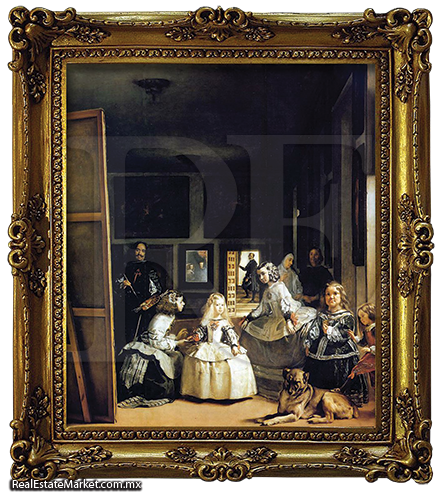
Las Meninas o la Familia de Felipe IV, 1656, óleo sobre lienzo, 381 x 276 cm de Diego Da Silva Velázquez.
Museo Nacional del Prado, historia viva
El Prado es la “residencia” de Velázquez, donde se custodian sus grandes obras maestras como “Las Meninas” y “Las Hilanderas”. Sin duda, se trata del gran templo sagrado de la pintura española. En su origen, el museo exhibía un primer catálogo que constaba de 311 pinturas. En la actualidad, el Museo Nacional del Prado, abierto todos los días, exhibe una colección compuesta por 1.150 obras aproximadamente.
El Real Museo abrió por primera vez al público en 1819 gracias a rey Fernando VII. Debido al interés de su esposa, la reina María Isabel de Braganza, el soberano tomó la decisión de crear un Real Museo de Pinturas y Esculturas. Pronto pasó a denominarse Museo Nacional de Pintura y Escultura y más tarde adquirió su nombre definitivo, Museo Nacional del Prado.
Las sucesivas Colecciones Reales sembraron la semilla de un incomparable fondo de valor incalculable. El listado de obras es sobresaliente: “El jardín de las Delicias” de El Bosco; “El caballero de la mano en el pecho” de El Greco; “El tránsito de la Virgen” de Mantegna; “La Sagrada Familia”, conocida como “La Perla” de Rafael; “Carlos V en Mühlberg” de Tiziano; “El Lavatorio” de Tintoretto; “Autorretrato” de Durero; “Las tres Gracias” de Rubens... El Prado alberga 3.000 obras en sus almacenes, no exhibidas al público, pinturas que sí se muestran en colecciones itinerantes dentro y fuera de España, así como en instituciones depositarias, embajadas y otros organismos oficiales.
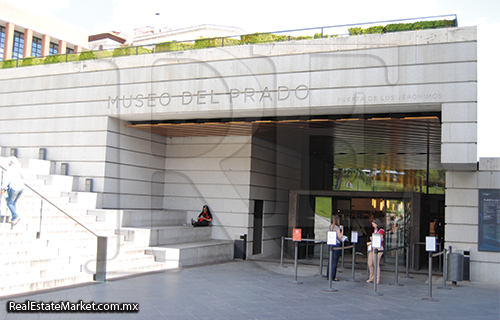
Museo Nacional del Prado, en Madrid, España, es uno de los más importantes y visitados del mundo.
A lo largo de la historia, este fondo se fue ampliando con pinturas, esculturas, dibujos y piezas decorativas. Del Museo de la Trinidad llegaron importantes obras con alto valor patrimonial, como “La Fuente de la Gracia” de la Escuela de Jan Van Eyck. Casi todo el conjunto de las pinturas del siglo XIX -los Madrazo, Vicente López, Carlos de Haes, Rosales y Sorolla- proceden del Museo de Arte Moderno.
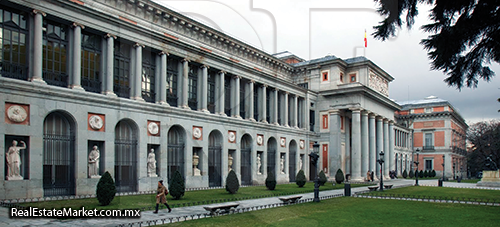
Donaciones, legados y compras contribuyeron a aumentar el patrimonio. Las Pinturas Negras de Goya llegaron a Madrid gracias a la donación del Barón Emile d’Erlanger en el siglo XIX. Compras muy interesantes en los últimos años han sido “El barbero del Papa” de Velázquez, en el 2003, y “El vino en la fiesta de San Martín” de Pieter Bruegel el Viejo, en 2010.
También se dieron restauraciones y algunos rescates (Tiziano y Ribera), así como gratos descubrimientos: el Prado cuenta con su propia “Gioconda”, hermana gemela de la famosa obra de Leonardo Da Vinci.
El Museo del Prado ha remodelado y ampliado su edificio en la última década. La obra de Rafael Moneo en 2007 -152 millones de euros, al margen de la recuperación del Claustro de los Jerónimos- posibilitó la rehabilitación del espacio con una finalidad funcional más acorde a los tiempos.
La última reforma se lleva a cabo con la recuperación del edificio de Villanueva, integrándose al conjunto.
Por primera vez, este museo nacional ha registrado un descenso del 7% en sus ingresos, con una notable caída del 25% en el número de visitantes desde septiembre del 2012. El Patronato que dirige el centro ha lanzado un plan de 2013-2016 con el que confía lograr una plena recuperación a partir del año 2015, con la ansiada superación de la complicada situación económica presente.
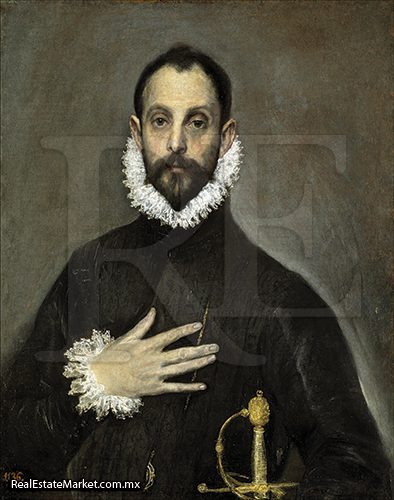
El Caballero de la mano en el pecho, de El Greco, 1580, Óleo sobre tela mide 82 x 66 cm.
Mientras tanto, sigue organizando exposiciones de relieve internacional. Para el 2014, los protagonistas serán El Greco, en la celebración del cuarto centenario de su fallecimiento, Goya y Van der Weyden.
Ingres, Mariano Fortuny, Luis de Morales y Bernini centrarán la programación en el 2015. El quinto centenario de la muerte de El Bosco, el pintor francés Georges de La Tour y la pintora flamenca Clara Peeterst serán invitados de lujo para el año 2016. También se contemplan programas y exposiciones en conjunto con otros museos internacionales.
Centro de Arte Nacional Reina Sofía, custodio de “El Guernica”
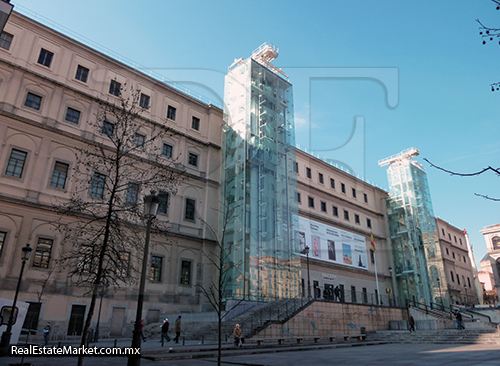
El Museo de Reina Sofía, ignagurado en 1992, tomó como se de el antiguo Hospital General de Madrid, gran edificio neoclásico del siglo XVlll.
Colirio para limpiar los ojos y reavivar la mirada. Arte que enseña a ver y entender. La colección del Museo Reina Sofía contiene alrededor de 20,000 obras. Y en este joven templo del arte se encuentra el brillo inimitable de “El Guernica” (1937), un óleo sobre lienzo cuyas medidas lo acercan a la pintura mural (349,3 x 776,6 cm).
Esta obra de Picasso rinde tributo a Guernica, ciudad bombardeada el 26 de abril de 1937 por la aviación alemana e italiana durante la Guerra Civil Española. Se trata de una de las obras de artes más influyentes en el siglo XX.
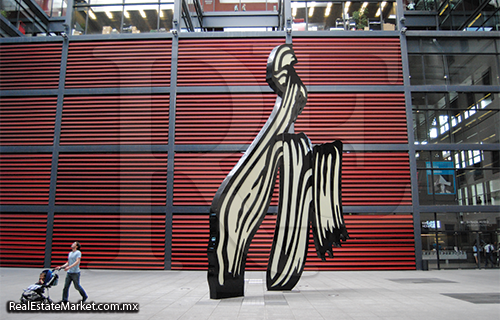
La Plaza interior inaugurada en 2005, fue dirigida por el arquitecto francés Jean.
A la sombra del Museo del Prado, en un país a veces ensombrecido e incluso acomplejado por el peso de su pasado, la apertura del Museo Nacional Centro de Arte Reina Sofía supuso la creación de un museo de arte moderno y contemporáneo en España de auténtica referencia internacional.
En abril de 1986 se abría el Centro de Arte Reina Sofía tan solo como sala de exposiciones temporales. El Museo, por disposición legal, fue creado en 1988, dependiente del Ministerio de Cultura. A finales de 1988, José Luis Íñiguez de Onzoño y Antonio Vázquez de Castro llevarían a cabo las últimas modificaciones del viejo Hospital San Carlos, edificio declarado Monumento Histórico-Artístico en 1977 y donde se ubica desde su origen.
En la rehabilitación, cabría destacar especialmente las tres torres de ascensores de vidrio y acero, diseñadas en colaboración con el arquitecto británico Ian Ritchie. El 10 de septiembre de 1992, los Reyes de España, D. Juan Carlos y Dña. Sofía, inauguraban la Colección Permanente del Museo Nacional Centro de Arte Reina Sofía.
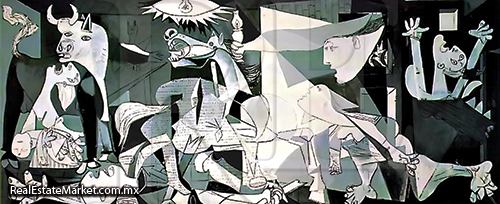
Guernica de Pablo Picasso 1937, óleo sobre lienzo, 349 x 77 cm.
Aunque su estado de salud material es delicado, “El Guernica” sigue atrayendo las miradas. Actualmente se desarrolla un programa de investigación, mediante un robot, para diagnosticar el verdadero estado de conservación interior.
El óleo de Picasso aterrizó en España en 1981, pero se expuso en el Reina Sofía a partir de 1992, cuando se inauguraba como museo nacional. Existe una sala dedicada al pabellón español en la Exposición Internacional de París de 1937, donde se mostró por primera vez al público esta obra ahora universal.
Obras de Picasso, Bacon, Braque, Miró, Marcel Broodthaers, Dalí, Juan Gris, Delaunay... Una colección que suma alrededor de 30,000 obras, sumando nuevas disciplinas artísticas: 4,100 pinturas, más de 1,700 esculturas, casi 3,600 dibujos, más de 5,500 grabados, 4,230 fotografías, 120 instalaciones y casi 40 video-instalaciones. Públicamente solo se exhibe una selección mínima que representa el 5% de sus fondos.
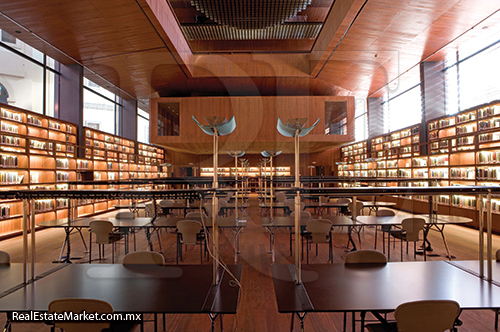
La biblioteca y centro de información del Museo Reina Sofía se compone de una serie de colecciones especializadas en Arte contemporáneo.
En 2005 el arquitecto Jean Nouvel llevó a cabo la última gran transformación y ampliación del Reina Sofía -92 millones de euros-. Fue un proyecto discutido, pero la incorporación de la nueva Biblioteca y el Centro de Documentación ha permitido desarrollar, entre otras virtudes, una mejor integración en la propia ciudad de Madrid. El museo generaba un nuevo espacio público con la creación incluso de una plaza en su propio interior. Todo facilitó un mejor acceso e interactividad para estudiantes, curiosos y amantes del arte en general.
El Reina Sofía acogió 2.565.000 de visitas durante el pasado año 2012. En este momento, Dalí es el gran invitado. La gran exposición “Todas las sugestiones poéticas y todas las posibilidades plásticas”, que ocupa la tercera planta, augura un nuevo récord de visitas. Permanecerá abierta hasta finales de septiembre del 2013.
Museo Thyssen-Bornemisza, grandes maestros
Probablemente, el catálogo Thyssen-Bornemisza era la colección privada más importante del mundo en los años 1990. Tras la inauguración de este nuevo museo en Madrid en 1992, creado con la base de esta colección, el Estado español adquirió en junio de 1993 un lote de 775 cuadros por 350 millones de dólares, cifra tres veces inferior al valor estimado.
En la actual sede del Thyssen, el Palacio de Villahermosa, el amante del arte puede disfrutar de no pocas obras maestras, como “Retrato de Enrique VIII” de Holbein; “Arlequín con espejo” de Picasso; “Santa Catalina” de Caravaggio, y “Habitación de hotel” de Hopper. También se encuentran otros grandes maestros como Van Gogh, Gauguin, Matisse, Duccio, Lucas Cranach, Durero, Frans Hals, Kirchner, Mondrian y Klee. Es destacable una importante colección de pintura norteamericana del siglo XIX, única en el ámbito museístico europeo.
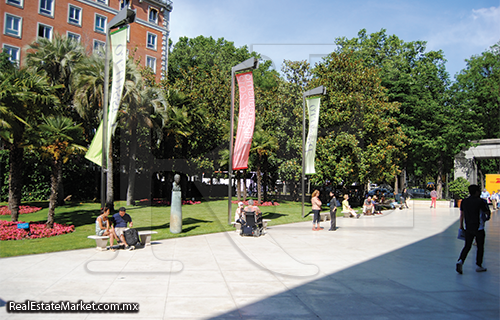
El museo thyssen-bornemisza exhibirá a finales de este año pisarro y el surrealismo y el sueño.
El Museo Thyssen-Bornemisza ofrece un recorrido desde el siglo XIII hasta el arte más actual, de finales del siglo XX. Cuelgan de sus muros cerca de mil obras comprendidas en este amplio periodo: Renacimiento, Barroco, Romanticismo y el arte de los siglos XIX y XX, hasta llegar al Pop Art.
Provocan e invitan a pensar al visitante todas las pinturas de los movimientos de las vanguardias, como el Impresionismo, el Fauvismo, el Expresionismo alemán y las tendencias experimentales de comienzos del siglo XX.
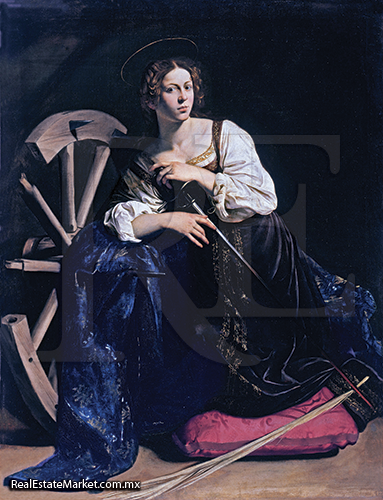
Santa Catalina de Caravaggio es una de las obras que alberga el museo de thyssen-bornemisza.
Este prestigioso museo se inauguró en 1992, mismo año que el Centro de Arte Nacional Reina Sofía. En 2004 se llevó a cabo la última ampliación con un presupuesto de 36 millones de euros. De forma altruista, la baronesa Thyssen cedió al Estado español 240 obras de su colección privada durante 11 años. El compromiso de este préstamo se ha renovado recientemente para los tres años venideros.
La Colección Thyssen-Bornemisza, adquirida por el Estado español al barón Hans Heinrich Thyssen-Bornemisza en 1993, y la colección Carmen Thyssen-Bornemisza, propiedad de la baronesa viuda, conforman un gran legado artístico. En 2012, el Thyssen recibió 1,255,281 visitantes. La Fundación Colección Thyssen-Bornemisza, creada ad hoc, es la entidad responsable de la gestión.
Texto Leslie J. López
English
Home of master pieces
The art triangle in Madrid, integrated by the El Prado Museum, the Reina Sofia National Art Center and
the Thyssen-Bornemizsa Museum.

Nero and Seneca, 1904 (after restoration)./ Eduardo Barrón. Emptying mold, plaster, / 135 x 260 x 148 cm.
The Prado-Recoletos is a centric spot in Madrid, home of the called “Triangle of Art”. In its ensemble conforms a stroll through what we can consider the best art gallery in the world. Paintings, color pallets and artist; without them, it would be impossible to conceive the history of painting.

Monument to Goya in 1902,/ held in broce and marble by the Spanish sculptor Mariano Benlliure.
Velázquez, Goya, Picasso, Tiziano, Rubens, The Bosco, Gauguin, The Greco, Van Gogh, Durero, Dalí, Matisse, Klee… Are just a few of the “illustrate neighbors” that inhabit the Paseo del Prado: Prado Museum, The Reina Sofia and the Thyssen-Bornemizsa musem.

Las Meninas or The Family of Philip IV, 1656, oil over canvas, 381 x 276 cm / Diego Da Silva Velázquez.
National Museum of El Prado, Live history
El Prado is the “residence” of Velazquez, it is were his great masters pieces are guarded, such as “Las Meninas” and “Las Hilanderas”. Without a doubt, this is a great sacred temple of the Spanish arts. In its origin, the museum exhibited a first catalogue of 311 paintings. Today, the Prado National Museum, opened daily, is the showroom of a collection composed by 1,150 art works.
The Royal Museum opened its doors to the public in 1819, inaugurated by King Fernando VII. Due to the interest of his wife, Queen Maria Isabel de Braganza, the sovereign made the decision to create the Royal Museum of Paintings and Sculptures. It soon acquired its definite name, National del Prado Museum.
The Royal Collection plowed the seed of incomparable value. The listing of the outstanding pieces of art are: “The Garden of the Delights” of Bosch; The Knight with his Hand on his Breast” of El Greco; “The Transit of the Virgin” by Mantegna; “La Sagrada Familia”, known as “La Perla” of Rafael; “Carlos V in Mühlberg” by Tiziano; “The Lavatory” of Tintoretto; “Self-portrait” by Durero; “The Three Graces” of Rubens... El Prado is home of 3,000 pieces in its storage, not exhibited to the public, how ever, they are shown in itinerant collections inside and out of Spain, as well as in several institutions, like embassies and other official organisms.

El Prado Museum in Madrid, Spain, is one of the most important and visited in the world.
Through out history, this deposit was amplified with painting, sculptures, drawings and decorative pieces. From the Trinity Museum, arrived important elements with high patrimonial value, such as “The Fountain of Grace” from the School of Jan Van Eyck. Almost all the paintings belong to the XIX century (Madrazo, Vicente López, Carlos de Haes, Rosales and Sorolla), proceed to from the Modern Art Museum.

Donations, legacies and purchases, contributed to the increase of this heritage, The Black Paintings by Goya, arrived to Madrid thanks to the donation of baron Emile dÉrlanger in the XIX century. Very interesting purchases have been made in the last years, such is the case of “The Pope’s barber” by Velazquez, in 2003, and “The wine in the celebration of Saint Martin” by Pieter Bruegel the old, in 2010.
Restorations have been made along with several rescues (Tiziano and Ribera), and other pleasant discoveries: El Prado owns its “Gioconda”, twin sister to the famous masterpiece by Leonardo Da Vinci.
The Prado Museum has remodeled and amplified its facilities in the last decade. The work of Rafael Moneo in 2007 (152 million euro, besides the recovery of the Claustro de los Jeronimos) enabled the rehabilitation of this space with a functional finality, more in accordance to our times.
The last upgrade was performed with the restoration of the Villanueva building, integrating to the group.
For the first time, this national museum has registered a decrease of the 7% in its income, with a notable downfall of 25% in the number of visitors since September 2012. The board running the center has launched a 2013-2016 plan, with it, it trusts to achieve a full recovery starting 2015, with the overcoming of this complicated currently economic situation.
Meanwhile, it continues to organize expositions of international level. For 2014, the leading role will be for El Greco, in the celebration of the fourth century of his passing, along with Goya and Van der Weyden.

The Knight of the hand on the chest, El Greco, 1580, Oil on canvas, measures 82 x 66 cm
Ingres, Mariano Fortuny, Luis de Morales, and Bernini will be the center of focus in the 2015 program. The fifth century in commemoration of the death of Hieronymus Bosch, “El Bosco”; the French painter Georges de La Tour and the flemish artist Clara Peeters will be luxury guests for 2016. Several programs and expositions are contemplated as well, along with other international museum.
Reina Sofia National Art Center, guardian of “Guernica”
Eyedrops to cleanse eyes and revive the gaze. Art that teaches to regard and understand. The collection in the Reina Sofia Museum contains around 20,000 pieces. In this young temple of the art, the inimitable shine of “Guernica” (1937) is found, an oil over a canvas whose measures approach that of a mural (349,3 x 776,6 cm).

Reina Sofia Museum, opened in 1992, made his headquarters the old General Hospital of Madrid, great eighteenth century neoclassical building.
This masterpiece by Picasso, is a homage to Guernica, a city taken by bombs the 26th of April 1937 by the German and Italian aviation during the Spanish Civil War. We are talking about one of the most influential pieces of artwork in the XX century.
At the shadow of the Prado Museum, in a country sometimes overshadowed and even complex by the weight of its own past, the opening of the Reina Sofia National Art Center made way to the creation of a modern art and contemporary museum, in a Spain of authentic international reference.
In April 1986, the Reina Sofia Art Center opened with only one temporary showroom. The museum, by legal disposition, was created in 1988, in the dependence of the Minister of Culture. By the ends of 1988, Jose Luis Iñiguez de Onoñozo and Antonio Vazquez de Castro, carried the last modification of the old San Carlos Hospital, declared Artistic Historic Monument in 1977 and which still remains in its original location.
In the restoration, it would be important to point out specially the three towers with glass elevators and designed finishes in collaboration with the British architect Ian Ritchie. The 10th of September 1992, the Kings of Spain, Don Juan Carlos and Doña Sofia, inaugurated the permanent collection of the Reina Sofia National Art Center.

The interior plaza opened in 2005, was directed by French architect Jean Nouvel.
Although the material estate of health of “The Guernica” is delicate, it keeps attracting glances. Today, a research program is being developed, using a robot to diagnose the true state of conservation in its interior.
Picasso’s oleo landed in Spain in 1981, but was exposed at Reina Sofia since 1992, when it was inaugurated as National Museum. An exhibition room exists dedicated to the Spanish pavilion in the International Exposition of Paris in 1937, where this universal masterpiece was shown for the first time to the public.
The work of Picasso, Bacon, Braque, Miró, Marcel Broodthaers, Dalí, Juan Gris, Delunay…a vast collection of paintings of 30,000 masterpieces, adding new artistic disciplines; 4,100 paintings, over 1,700 sculptures, almost 3,600 drawings, more than 5,500 etchings, 4,230 photographs, 120 installations and almost 40 video-installations. Publicly, a minimum selection that represents the 5% of its total is exposed.
In 2005, architect Jean Nouvel carried the last grand transformation and expansion of the Reina Sofia (92 million euros). It was a project discussed to incorporate the new library and documentation center, which has enabled to develop amongst other virtues, a better integration of Madrid. The museum generates a new public space with the creation of a plaza in its interior. In conjunction, this facilitated a better access and interactivity for students, curious pass byers and lovers of the art in general.

Guernica by Pablo Picasso, 1937, Oil on canvas, 349 x 77 cm.
The Reina Sofia hosted 2,565,000 visitors in 2012. At this moment, Dalí is the honor guest. The great exposition “All the poetic suggestions and all the plastic possibilities” occupies the third floor, which predicts a new record of visitors. It will remain open until the last days of September 2013.

The Library and Information Center Reina Sofia Museum, consists of a number of specialist collections in contemporary art.
Thyssen-Bornemisza Museum, Great masters
The Thyssen-Bornemisza museum is owner of the catalogue that probably is the most important private collection of not few masterpieces in the world since 1990. After the inauguration of the museum in Madrid in 1992, founded with the base of this collection, the Spanish State acquiered in June 1993, 775 canvas purchased in 350 million dollars, figure three times lower than the estimated value.
In the actual Thyssen headquarters, the Villahermosa Palace, the art lover can enjoy of several works of art, such as “Portrait of Henry the VIII” by master Holbein; “Harlequin with mirror” by Picasso; “Saint Catherine” from Carvaggio and “Room of a Hotel” by Hopper. Amongst other great master we can find Van Gogh, Gauguin, Matisse, Duccio, Lucas Cranach, Durero, Frans Hals, Krichner, Mondrian and Klee. It is quite important to point out the collection of North American paintings of the XIX century, unique in european museum studies.

The Thyssen-Bornemisza Museum will display this year to Pissarro and The surrealist art and the dream.
The Thyssen- Bornemisza museum offers a variety of paintings from the XIII century through the most actual styles dating to the XX century. Hung in its walls are nearly one thousand pieces located in this vast time period: Renaissance, Barroque, Romanticism, and art of the XIX and XX centuries, until the arrival of Pop Art.
Provoking the visitor and inviting him to think about all the avant gard movements, like Impressionism, Fauvism, German Expressionism, and experimental tendencies from beginnings of the XX century.
This prestigious museum was inaugurated in 1992, same year as the Reina Sofia Art Center. In 2004, the expansion took place, with a budget of 36 million euros. In a Altruistic matter, Baroness Thyssen agreed to the Spanish Estate 240 pieces of her private collection for the period of 11 years. The Foundation Thyssen-Bornemisza Collection, creaded as hoc, is the entity responsible for its management.

St. Catherine of Caravaggio is one of the works that houses the Thyssen-Bornemisza Museum.
The Thyssen-Bornemiza collection, acquired by the Spanish Estate from Baron Hans Heinrich Thyssen Bornemiza in 1933, and the Carmen Thyssen- Bornemiza, property of the widow baroness, which conforms a great artistic legacy. In 2012, the Thyssen received 1.255.281 visitors. The Foundation Thyssen-Bornemisza Collection, created ad hoc, is the entity responsible for this gestion.
Text Leslie J. López
